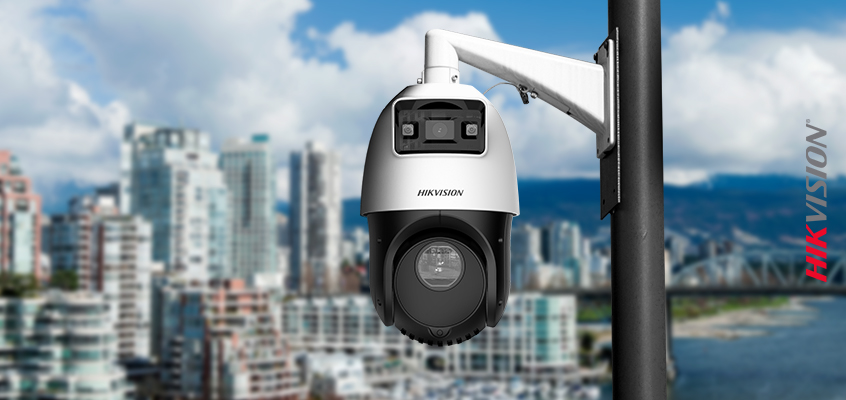Three New PTZ Cameras Offer Compact, High Performance Imaging

Hikvision has three new PTZs to help you boost end user security, including a compact 4-inch TandemVu PTZ that incorporates a bullet and PTZ lens in one camera unit. Read more below about these high performance new PTZ security cameras.
Compact TandemVu 4-Inch
Hikvision's TandemVu 4 MP 25x IR Network Speed Dome DS-2SE4C425MWG-E(14F0) adopts a 1/2.8-inch progressive scan CMOS chip. This 4-inch TandemVu camera is compact while maintaining high performance, and uses its 25x optical zoom to cover expansive areas. It has 2 lenses—1 fixed lens and 1 PTZ—all featured in one camera that can capture a large area and wide-area details at the same time.
The camera also has excellent low-light performance with powered-by-DarkFighter technology and ColorVu technology, and has an expansive night view with up to 328 ft. (100 m) IR distance and 98 ft. (30 m) white light. This camera series can be widely used for a wide range of applications including squares, parks, warehouses, and more.
Smart Tracking 4-Inch PTZ
Hikvision’s DS-2DE4A425IWG-E is a 4 MP PTZ with high quality imaging that offers up to 60 fps performance. It also features excellent low-light performance via powered-by-DarkFighter technology and provides clear imaging against strong back lighting due to its 120 dB WDR technology. The DS-2DE4A425IWG-E has pan and tilt ability that enables camera to monitor zones of interest, and its 25x optical zoom allows for closer viewing of subjects in expansive areas. It is built with IR light which can reach up to 164 feet (50 meters) IR range to ensure safety at night, plus it’s equipped with a water and dust resistant rating (IP66). The PTZ is triggered to Smart Tracking (auto tracking) of a target when a human or vehicle classification is identified, driven by AI algorithms.
Varifocal ColorVu Camera
Hikvision’s ColorVu technology provides 24/7 vivid colorful images with its f1.0 advanced lenses and high performance sensors. The f1.0 super-aperture collects more light to produce brighter images. Advanced sensor technology can vastly improve the utilization of available light. This camera also features:
- 2.8-12mm motorized varifocal lens for easy installation and monitoring
- Clear imaging against strong backlight due to 130 dB WDR technology
- Focus on human and vehicle targets classification based on deep learning
The camera series is available in two models:
Contact your local Hikvision representative to select the best PTZ camera for your application.
